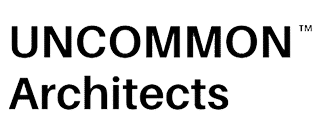Definition:
Heatmaps are graphical representations of data where values are depicted using different colors. In the context of architectural websites, heatmaps visually display user interactions on a webpage, highlighting areas where users focus, click, or scroll. This tool helps architects understand user behavior and optimize their website design for better user experience.
Detailed Description
Heatmaps provide valuable insights into how users interact with a website, showing hotspots of activity and areas that may need improvement. By analyzing heatmaps, architects can make data-driven decisions to enhance the usability and effectiveness of their online presence.
Applications in Architecture
The use of heatmaps in architecture allows firms to track user engagement, optimize website layout, and identify areas for improvement. By visualizing user behavior, architects can create more engaging and user-friendly online experiences.
Uses:
Heatmaps are crucial for analyzing user behavior patterns on architectural websites, allowing firms to optimize their digital presence for maximum engagement and conversions. By studying heatmaps, architects can tailor their content and design to better meet user expectations and preferences.
Examples:
– Tracking user clicks on project galleries to identify popular projects
– Analyzing scroll depth on service pages to assess content engagement
– Monitoring user attention on contact forms to optimize conversions
Implementation
Procedure:
1. Set up a heatmap tracking tool like Hotjar or Crazy Egg on your architectural website.
2. Monitor and analyze heatmap data regularly to identify user behavior trends.
3. Use insights from heatmaps to make informed decisions on website design and content optimization.
Steps:
– Track user clicks on call-to-action buttons for conversion rate optimization
– Review hover maps to understand user interests on specific elements
– Analyze scroll maps for content engagement insights
Considerations
Expected Outcomes
By implementing heatmaps on their architectural websites, firms can expect to:
– Improve user experience by optimizing website layout and content
– Increase conversions through targeted design changes based on user behavior
– Enhance overall website performance and engagement metrics
Outcomes:
The impact of using heatmaps can lead to better site usability, increased user engagement, and ultimately, higher conversion rates for architectural firms. By implementing heatmap data insights, architects can create a more effective online presence that resonates with their target audience.
Impact:
In the short term, architects can expect to see improvements in user engagement metrics and website usability. In the long term, the impact of heatmap optimization can result in sustained growth, increased brand visibility, and higher client acquisition rates.
Maintenance and Monitoring
Regularly reviewing heatmap data and implementing changes based on insights is essential for maintaining the effectiveness of this strategy.
Best Practices:
– Continuously monitor heatmap data to track user behavior changes
– Conduct A/B tests based on heatmap insights for ongoing optimization
– Update website design and content regularly to align with user preferences
Strategies:
– Use heatmap data to inform content creation and layout adjustments
– Collaborate with web developers to implement heatmap-informed changes effectively
– Stay updated on industry trends and adjust heatmap strategies accordingly
Additional Information
Related Terms
Associated Concepts:
– User Experience (UX) Design
– Conversion Rate Optimization (CRO)
– Web Analytics
Connections:
Heatmaps complement user experience design strategies by providing actionable insights for optimizing website performance and engagement. By integrating heatmap data with web analytics and CRO practices, architects can create a more user-centric digital experience.
Recent Trends
Innovations:
Recent innovations in heatmap technology include advanced tracking features, real-time data updates, and integration with AI-powered analytics tools. These innovations improve the accuracy and accessibility of heatmap data for architectural firms.
Updates:
Stay informed about the latest trends in heatmap technology and web design to leverage new opportunities for enhancing user engagement on architectural websites.
How Uncommonarchitects.com can help you with this
Uncommon Architects provides expert guidance and services for implementing heatmap strategies on architectural websites. With our tailored solutions, firms can effectively track, analyze, and optimize user interactions for improved website performance.
Explain how:
Uncommon Architects offers comprehensive heatmap analysis services to help architectural firms understand user behavior and optimize their online presence. Through data-driven insights and strategic recommendations, we empower firms to create engaging digital experiences that drive results.
Benefits:
By partnering with Uncommon Architects, firms can gain a competitive edge in the digital landscape through informed heatmap optimizations. Our services support firms in enhancing user engagement, increasing conversions, and driving business growth. Contact us today to unlock the full potential of your architectural website.
Are you ready to transform your studio?
FAQs
1. How can heatmaps benefit architectural websites?
2. Are there specific tools or software recommended for implementing heatmaps on architectural websites?
3. What are some key metrics to track using heatmaps on architectural websites?
4. Can heatmaps help improve user experience on architectural websites?
5. How can heatmaps be used to optimize the layout of architectural websites?
6. Are there any best practices for analyzing heatmap data on architectural websites?
7. What are some common mistakes to avoid when using heatmaps on architectural websites?
8. How often should heatmap data be reviewed and analyzed for architectural websites?
9. Are there any privacy concerns to consider when using heatmaps on architectural websites?
10. Can heatmaps help identify areas of high interest or engagement on architectural websites?
